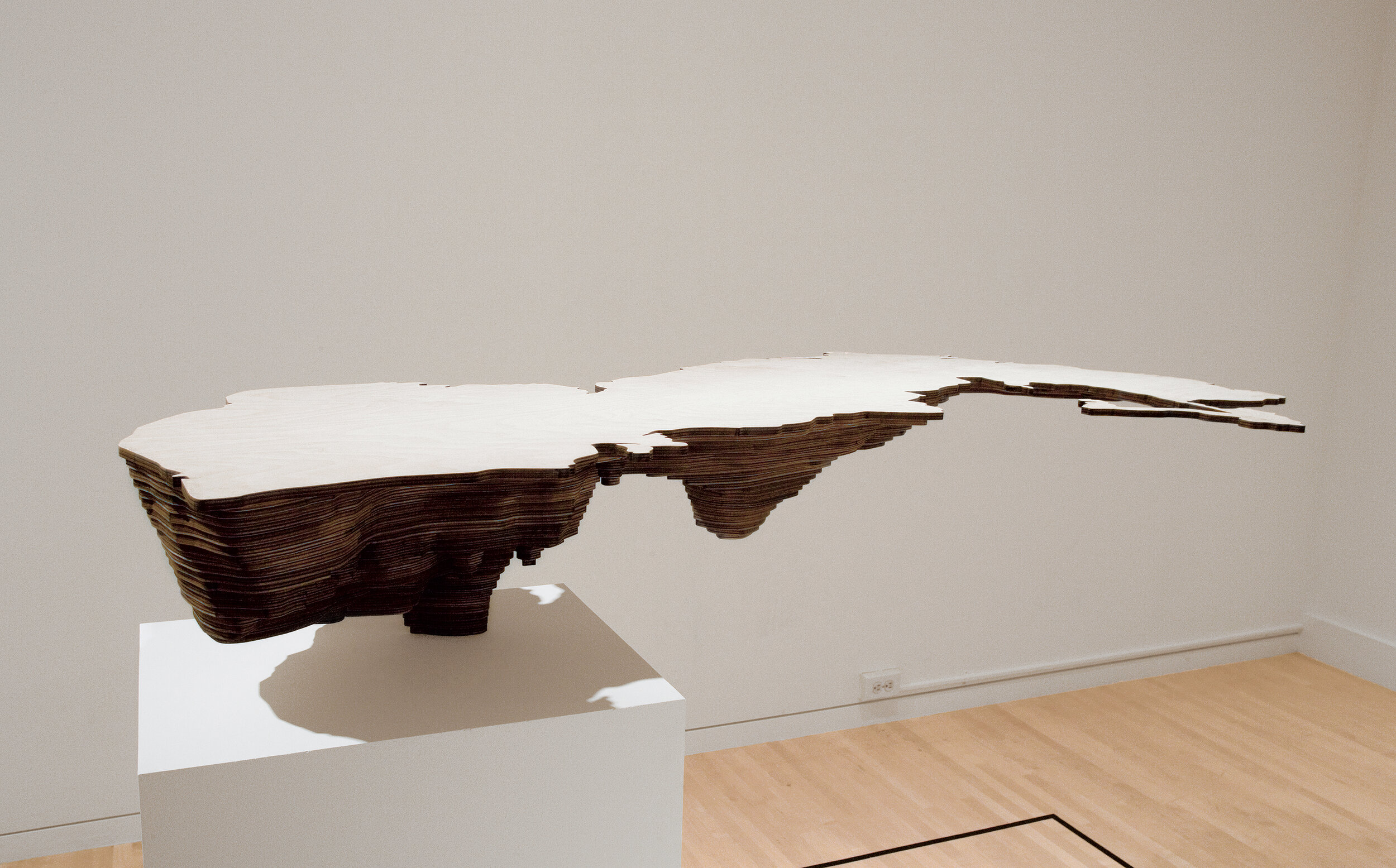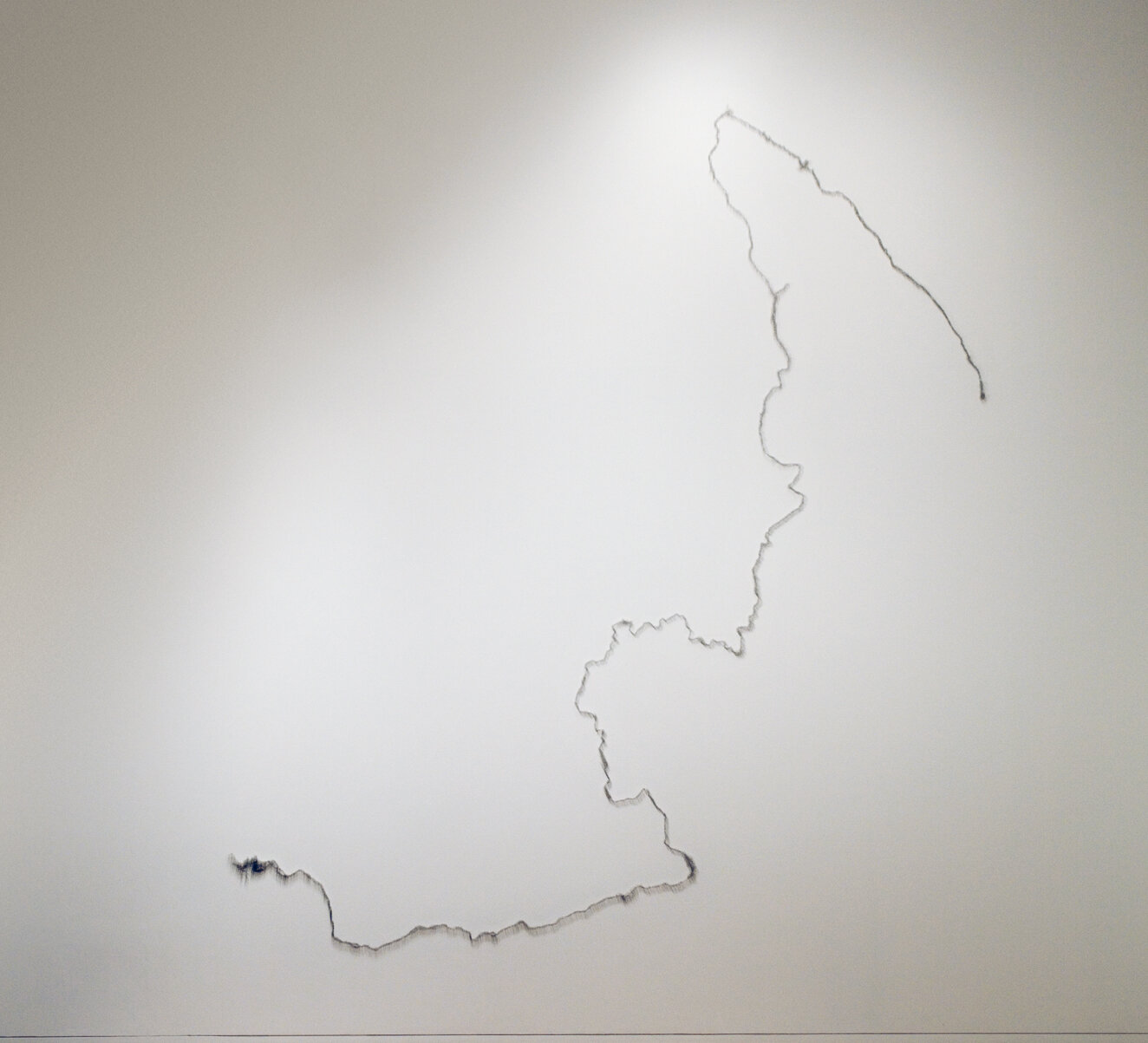Systematic Landscapes
Henry Art Gallery (pictured), Seattle, WA, 2006;
Contemporary Art Museum, St. Louis, MO, 2007;
Museum Of Contemporary Art San Diego, CA, 2008;
De Young Museum (Fine Arts Museums Of San Francisco), San Francisco, CA 2008–9;
Corcoran Gallery Of Art, Washington, D.C., 2009
Photography: Colleen Chartier
I wanted to bring the immersive quality of my large-scale environ- mental installations inside. The main body of the show consists of three large-scale works that place the viewer in a different and distinct relationship to the land. In one, based on an actual mountain terrain, you walk upon the land (2 x 4 Landscape), in another, based on an ocean topography, you walk under it (Water Line), and in the third, a form that is ambiguous as to whether it is to be seen as water or land (Blue Lake Pass), you walk through a landscape that has been sectioned and pulled apart. Smaller-scale works started with a series of cut atlases, or unplanned excavations through layers of mapped terrain, to create imaginary craters and landscapes within each book.
The sculpture 2x4 Landscape (2006) is fabricated from thou- sands of construction-grade two-by-four boards placed on end. From above they transform a landscape into a pixel-like view of a hill, incrementally rising in height to form the hill. Its form, imaginary but consciously shaped, makes ambiguous the boundary between land and water. It is both reminiscent of a landform and a water wave. The duality of this shape is noticeable as you walk around it. The shape is oriented in the space so that from two approaches it appears as a simple hill and from the other sides it appears fluid and amorphous, a wave about to crest.
For Water Line (2006) I used a computer rendering of an underwater landmass. (The computer translates physical space into a Cartesian x/y grid that is then pulled vertically to create a three-dimensional line diagram.) I formed the terrain into a wire gridded sculptural plain that captures the topography yet also is reminiscent of a drawing floating in space. In choosing to use an existing ocean- floor terrain, I wanted to bring one’s attention to rethinking what lies beneath the water. The oceans make up 70 percent of the earth’s area. Most of our mountains are underwater, yet we seldom think of what lies below the ocean’s surface.
Blue Lake Pass (2006), is a topographical sectioned landscape based on the terrain of a Rocky Mountain back range and made from cut particleboard. The choice of terrain is something familiar and personal; my family’s summer home is in southwestern Colorado. To create the sculpture I applied a 3 x 3-foot grid to that topology, then pulled the terrain apart so that one can walk through the landscape. thus shifting one’s perspective about the land and allowing a viewpoint more geologic in character.
Related Press:
Montgomery, David. Monumental Return. The Washington Post (March 17, 2009: C01)
O’Connor, Anne-Marie. Earthly concern. Los Angeles Times (April 1, 2008: E1, E6)
Hackett, Regina. The Lay of the Land According to Maya Lin. Seattle Post-Intelligencer (April 22, 2006: E1, E8)
















